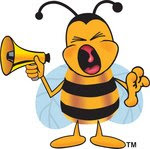The choice of food depends on the species being reared. Some species are general feeders and will accept a wide assortment of food, including dead or decaying organic matter. Examples of general feeders are most ants, crickets, and cockroaches. Other groups are specific feeders, with food preferences so restricted that only a single species of plant or animal is acceptable. Carefully note at the time of collection the food being consumed by the specimen, and provide the same food in the rearing cages.
Carnivorous insects should be given prey similar to that which they normally would consume. This diet can be supplemented when necessary with such insects as mosquito larvae, wax moth larvae, mealworms, maggots, or other insects that are easily reared in large numbers in captivity. If no live food is available, a carnivorous insect sometimes may be tempted to accept a piece of raw meat dangled from a thread. Once the insect has grasped the meat, the thread can be gently withdrawn. The size of the food offered depends on the size of the insect being fed. If the offering is too large, the feeder may be frightened away.
Bloodsucking species can be kept in captivity by allowing them to take blood from a rat, mouse, rabbit, or guinea pig. A human should be used as a blood source only if it is definitely known that the insect or mite being fed is free of diseases that may be transmitted to the human.
Stored-product insects and mites are easily kept alive and breeding in containers with flour, grains, tobacco, oatmeal or other cereal foods, and similar products. Unless leaf-feeding insects are kept in flowerpot cages where the host plant is growing, fresh leaves from the host plant must usually be placed in the rearing cage daily and old leaves removed.
Carnivorous insects should be given prey similar to that which they normally would consume. This diet can be supplemented when necessary with such insects as mosquito larvae, wax moth larvae, mealworms, maggots, or other insects that are easily reared in large numbers in captivity. If no live food is available, a carnivorous insect sometimes may be tempted to accept a piece of raw meat dangled from a thread. Once the insect has grasped the meat, the thread can be gently withdrawn. The size of the food offered depends on the size of the insect being fed. If the offering is too large, the feeder may be frightened away.
Bloodsucking species can be kept in captivity by allowing them to take blood from a rat, mouse, rabbit, or guinea pig. A human should be used as a blood source only if it is definitely known that the insect or mite being fed is free of diseases that may be transmitted to the human.
Stored-product insects and mites are easily kept alive and breeding in containers with flour, grains, tobacco, oatmeal or other cereal foods, and similar products. Unless leaf-feeding insects are kept in flowerpot cages where the host plant is growing, fresh leaves from the host plant must usually be placed in the rearing cage daily and old leaves removed.



No comments:
Post a Comment